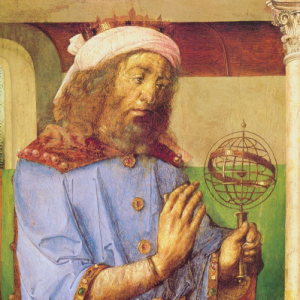
“Everybody knows,” said the US senator at a Senate hearing I attended, “that before Columbus everybody was sure that the world was flat.”
Regardless of what the senator believes, you’d have to go back a long, long, long time before Columbus to find people who believed the world was flat. In fact, back in about 240 BC not only was it well known that the earth was a ball, but they had managed to calculate its circumference.
And by AD 150, Claudius Ptolemy created his geocentric model of the universe, a model that held sway for 1,500 years until Nicolaus Copernicus and others placed the sun rather than the earth at the center of things.
In that 1,200 years Ptolemy’s treatise, Almagest, was copied over and over. In addition, scholars wrote numerous commentaries on the work.
All of which fascinates Wyoming Catholic College’s Dr. Henry Zepeda who has a particular interested in the way medieval scholars understood the mathematical sciences that they inherited from the Greeks and Arabs. He has spent much of his adult life reading medieval manuscripts in libraries across the United States and Europe and spent this past summer in Kansas City immersed in medieval manuscripts.
More Episodes
 2024-05-01
2024-05-01
 417
417
 2024-04-16
2024-04-16
 293
293
 2024-04-09
2024-04-09
 305
305
 2024-04-02
2024-04-02
 246
246
 2024-03-26
2024-03-26
 266
266
 2024-03-19
2024-03-19
 274
274
 2024-03-12
2024-03-12
 315
315
 2024-03-05
2024-03-05
 279
279
 2024-02-20
2024-02-20
 278
278
 2024-01-23
2024-01-23
 300
300
 2024-01-16
2024-01-16
 439
439
 2024-01-09
2024-01-09
 290
290
 2024-01-02
2024-01-02
 341
341
 2023-12-26
2023-12-26
 290
290
 2023-12-11
2023-12-11
 369
369
 2023-12-05
2023-12-05
 358
358
 2023-11-28
2023-11-28
 298
298
Create your
podcast in
minutes
- Full-featured podcast site
- Unlimited storage and bandwidth
- Comprehensive podcast stats
- Distribute to Apple Podcasts, Spotify, and more
- Make money with your podcast
It is Free
- Privacy Policy
- Cookie Policy
- Terms of Use
- Consent Preferences
- Copyright © 2015-2024 Podbean.com






